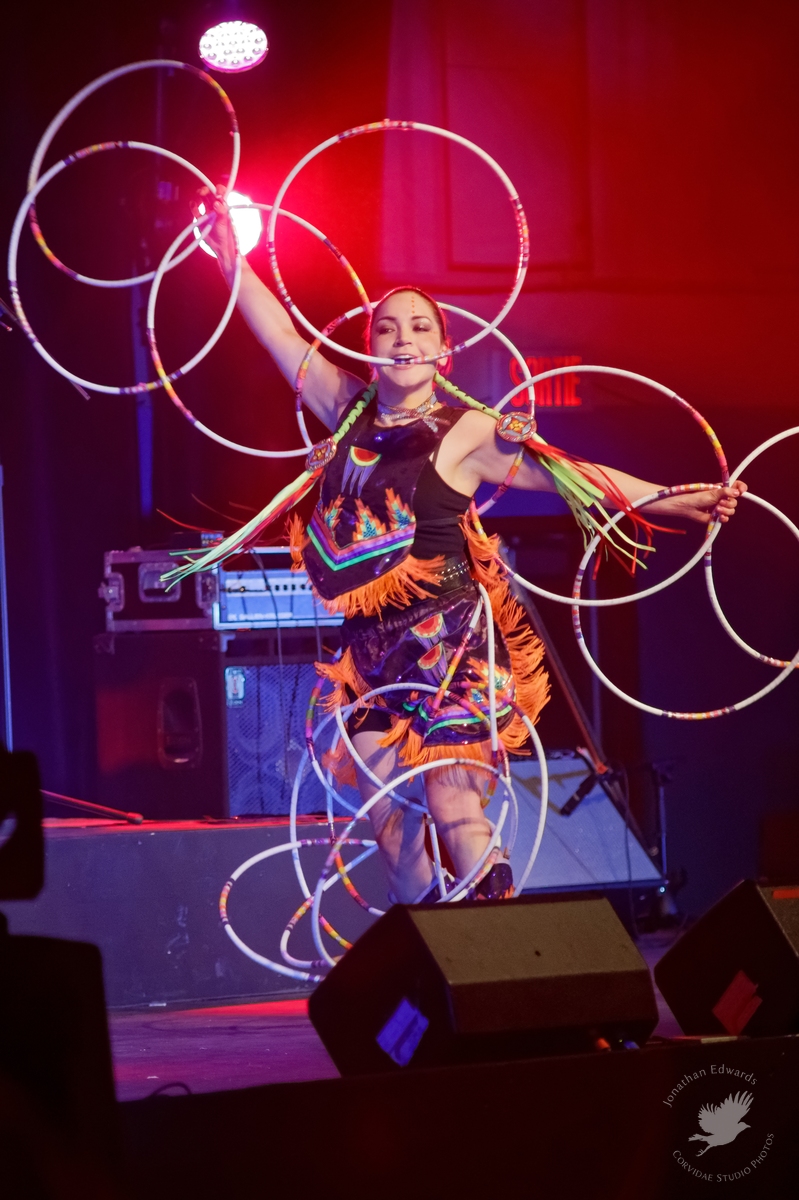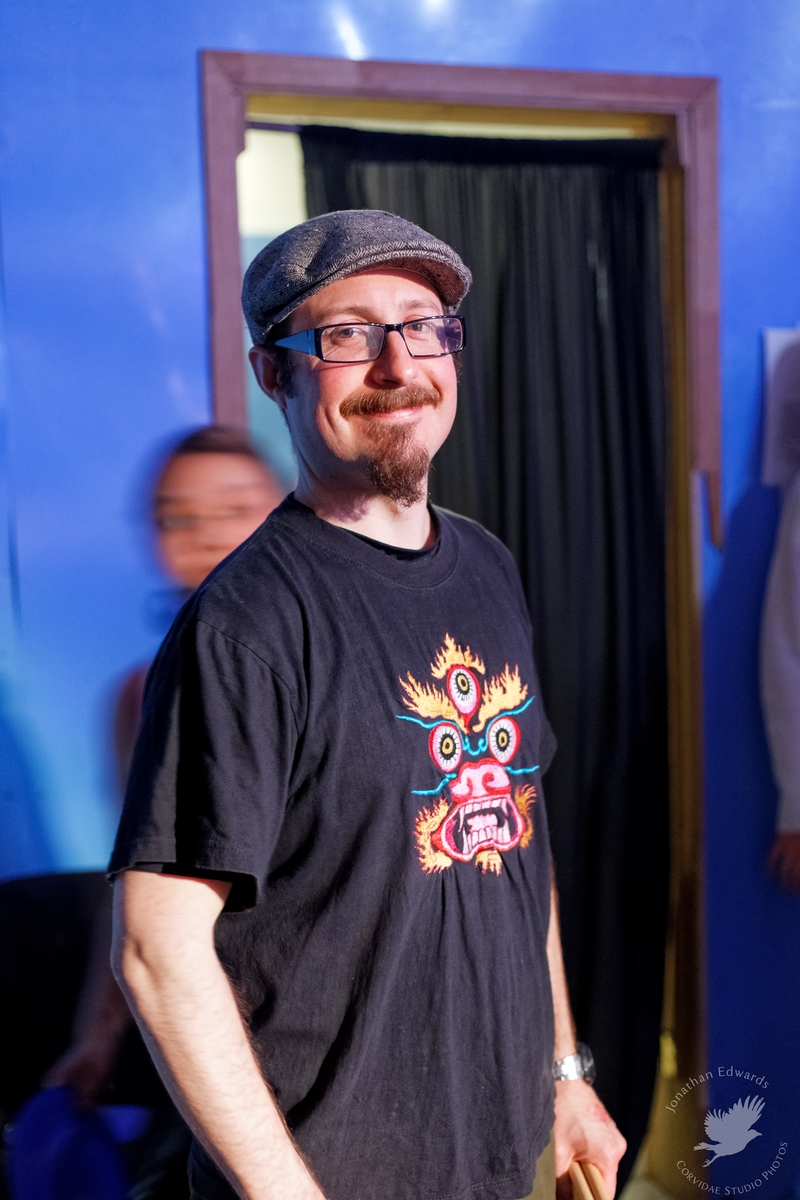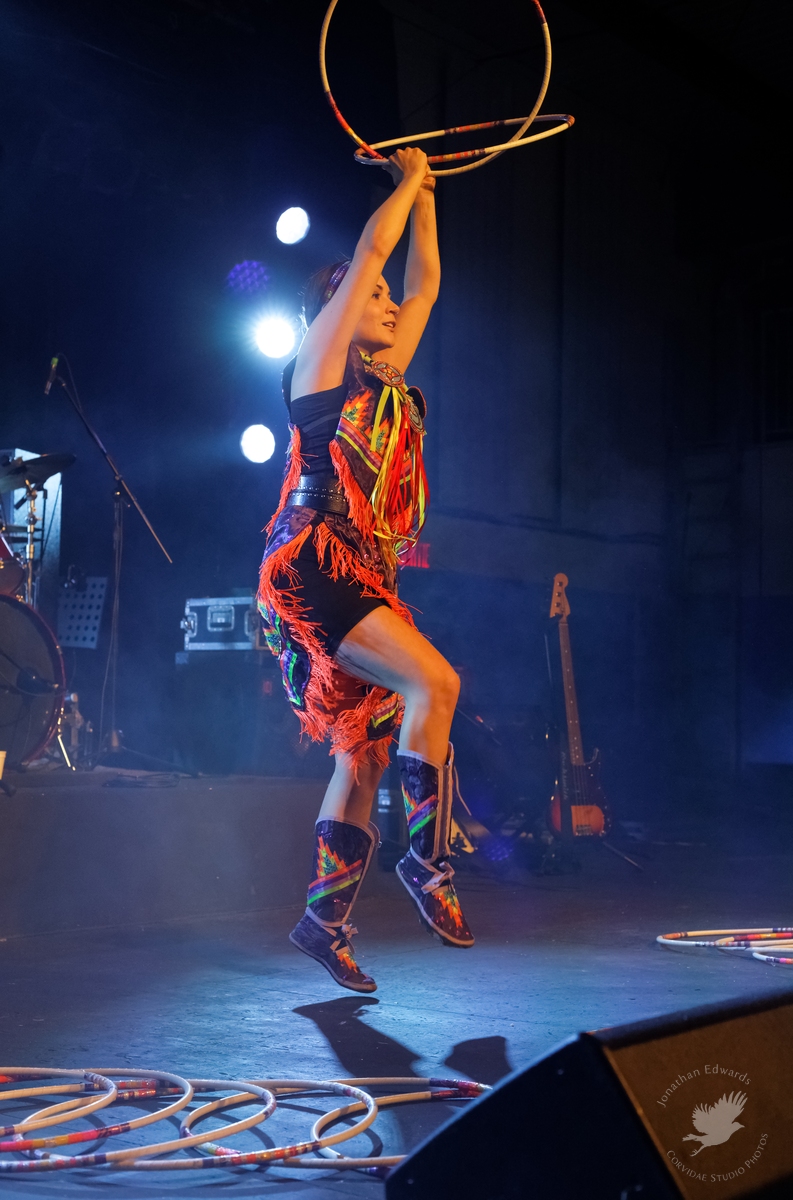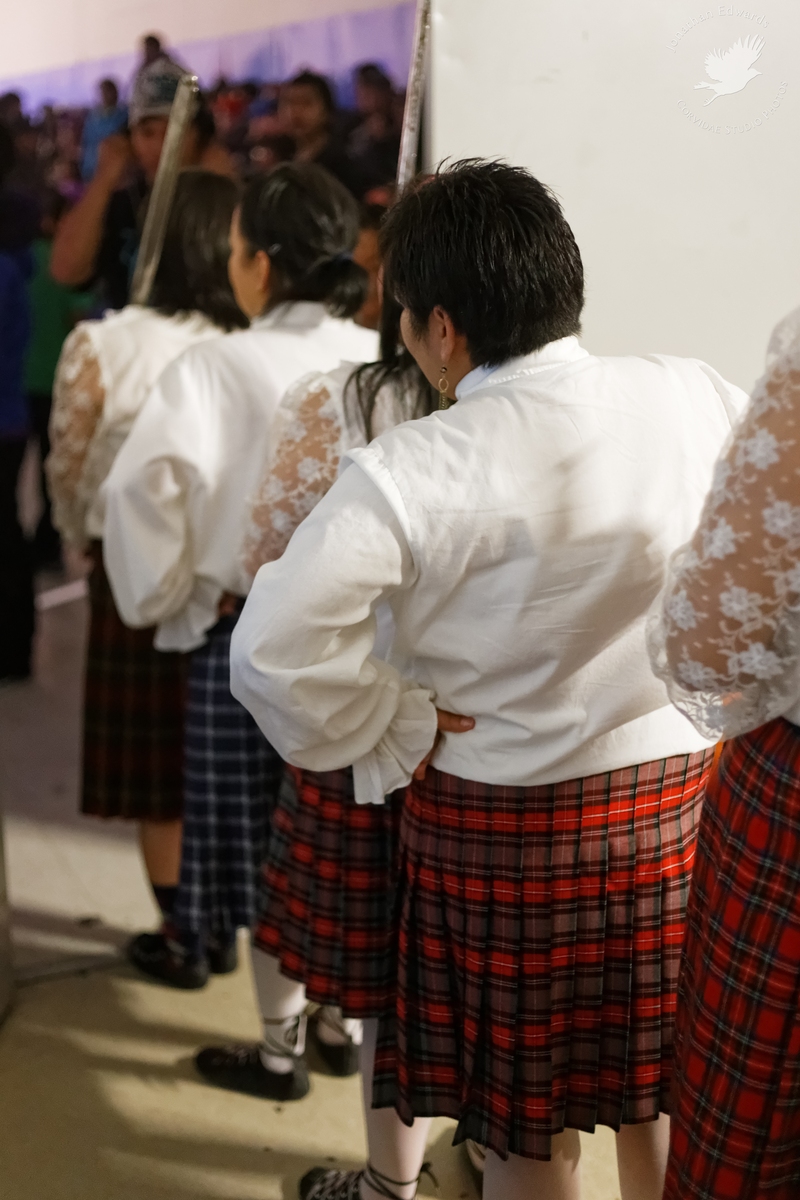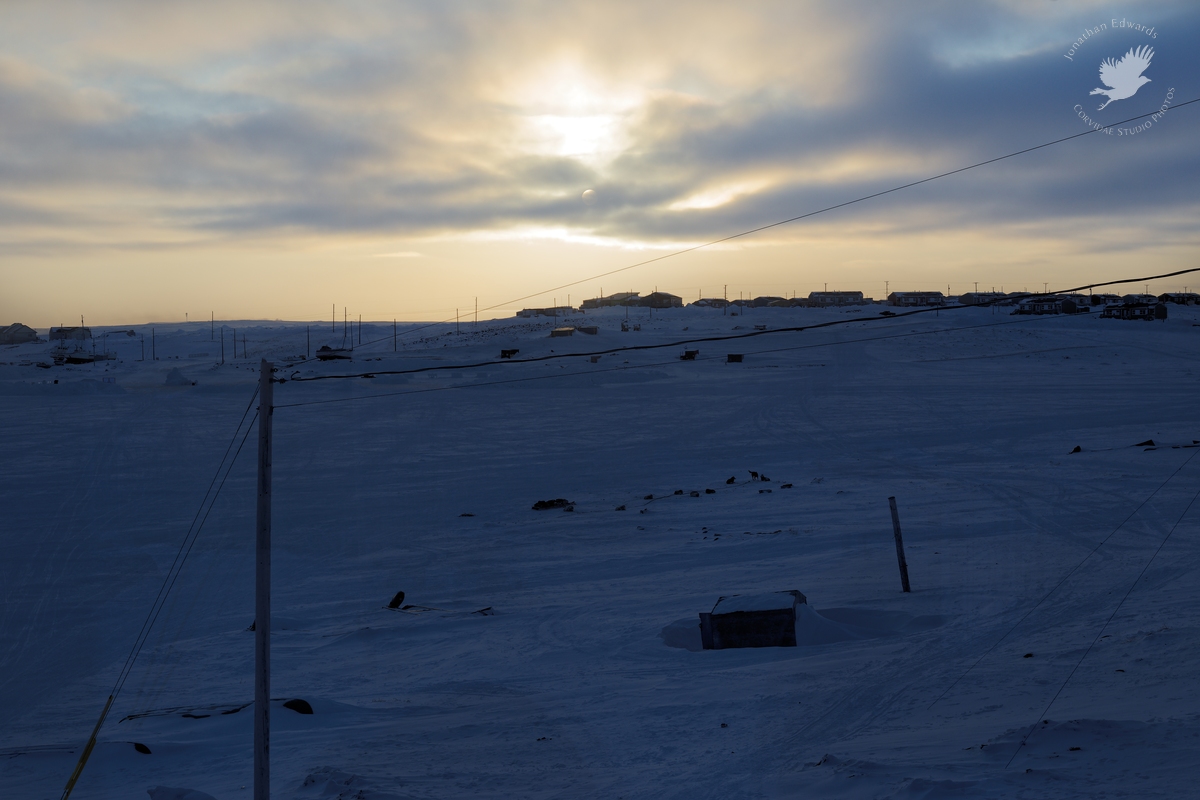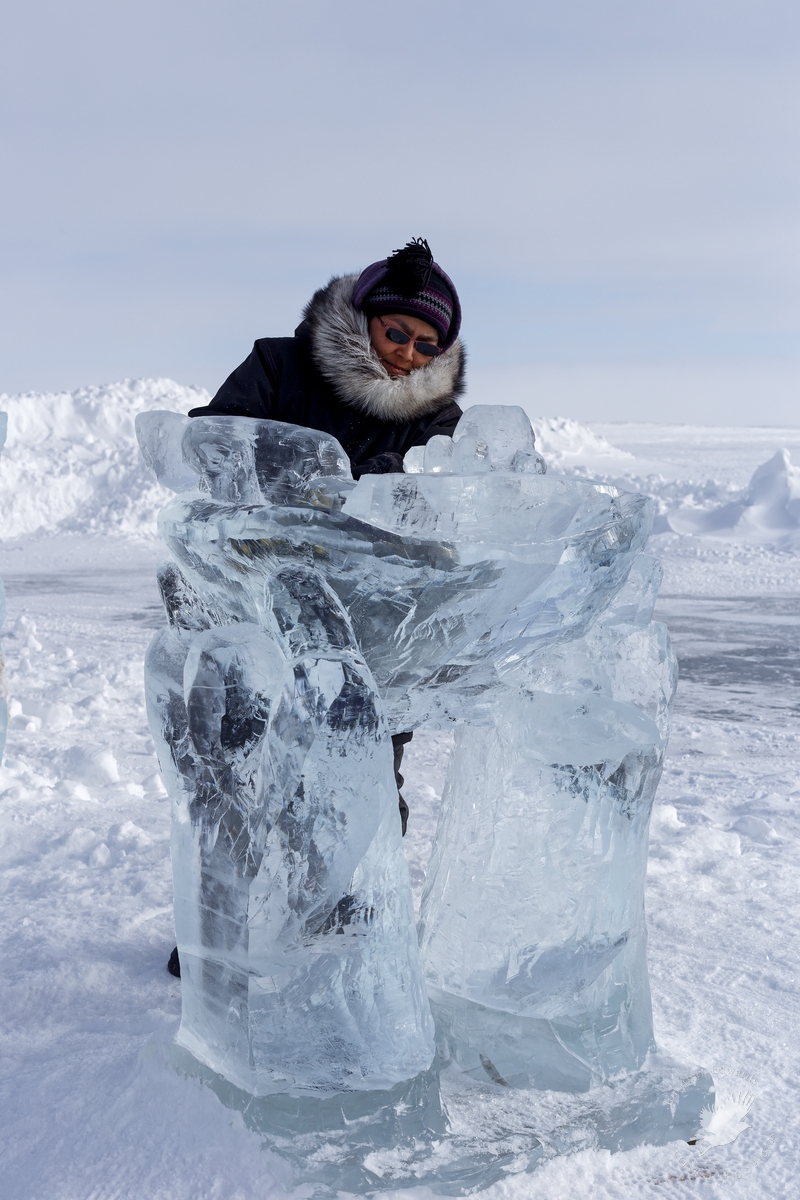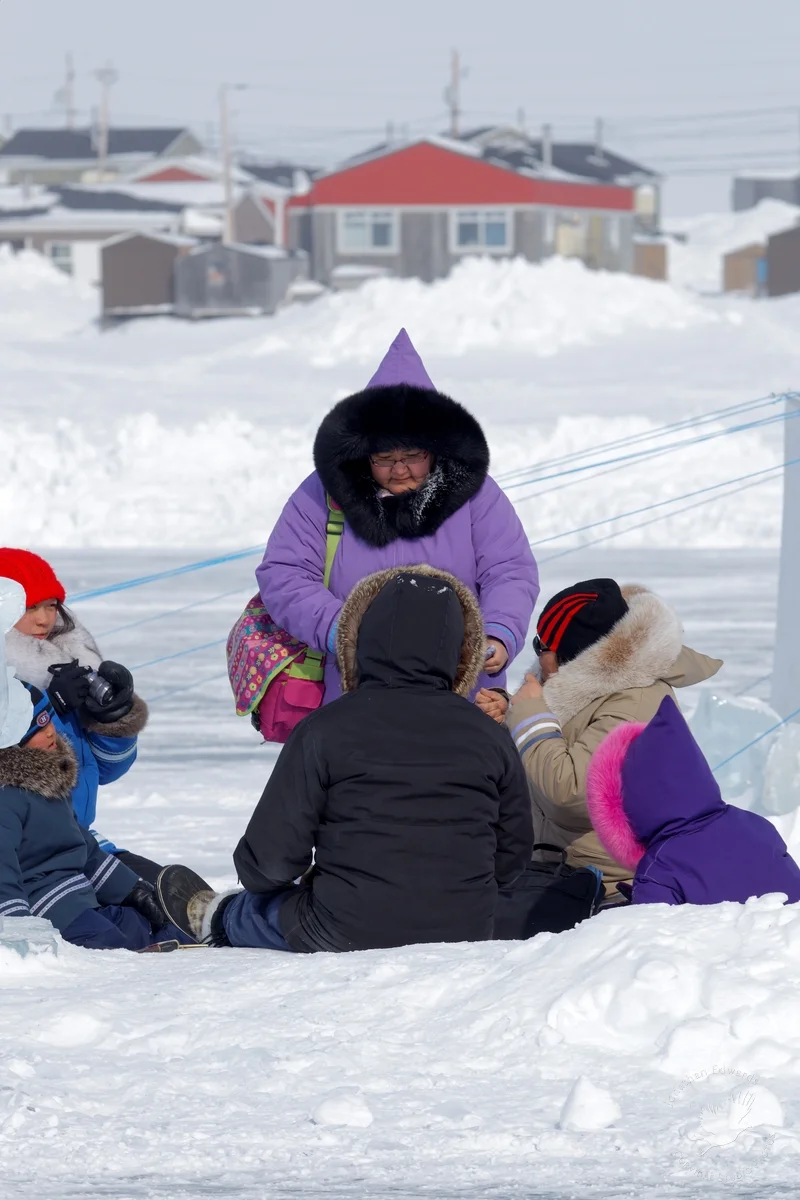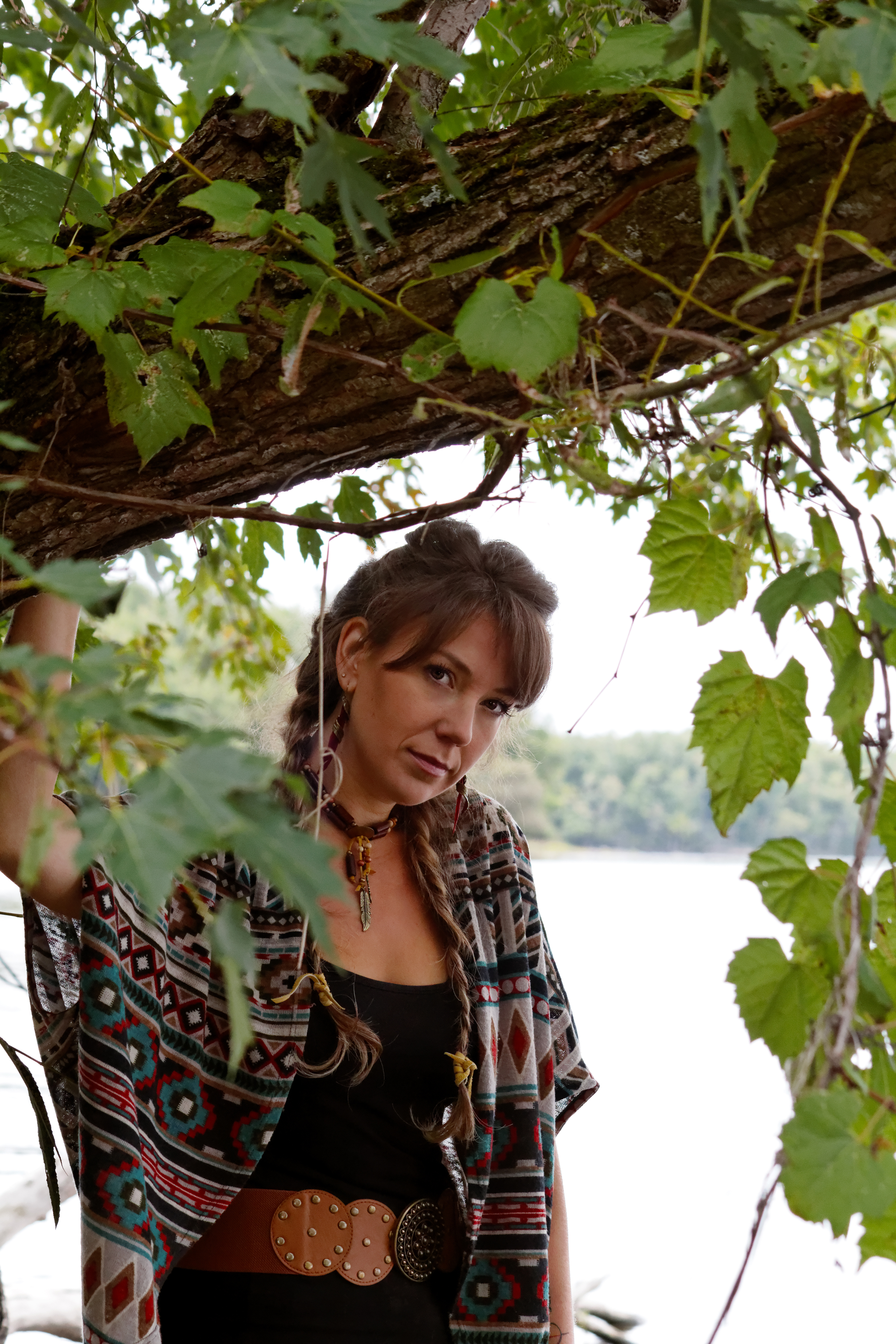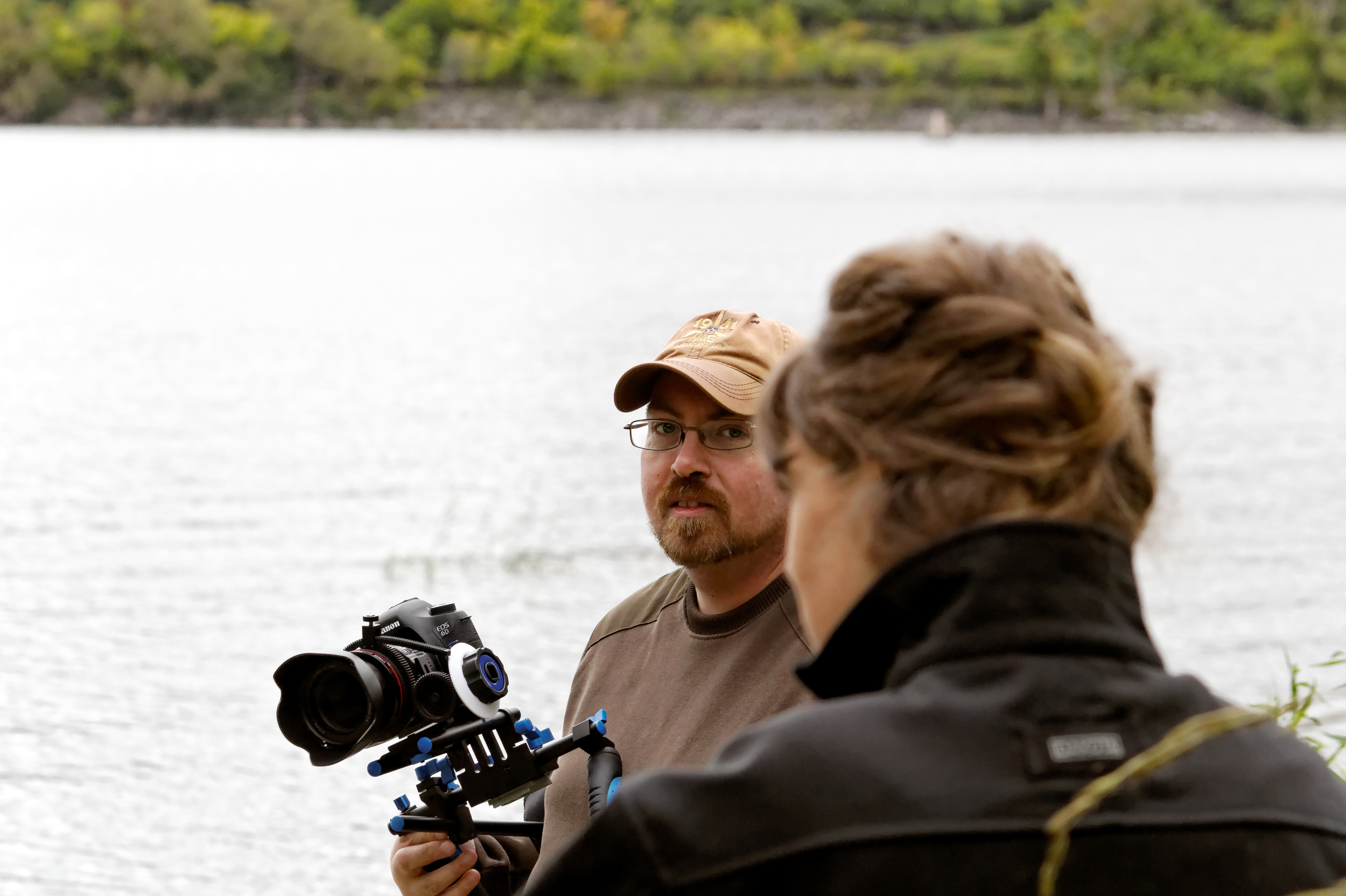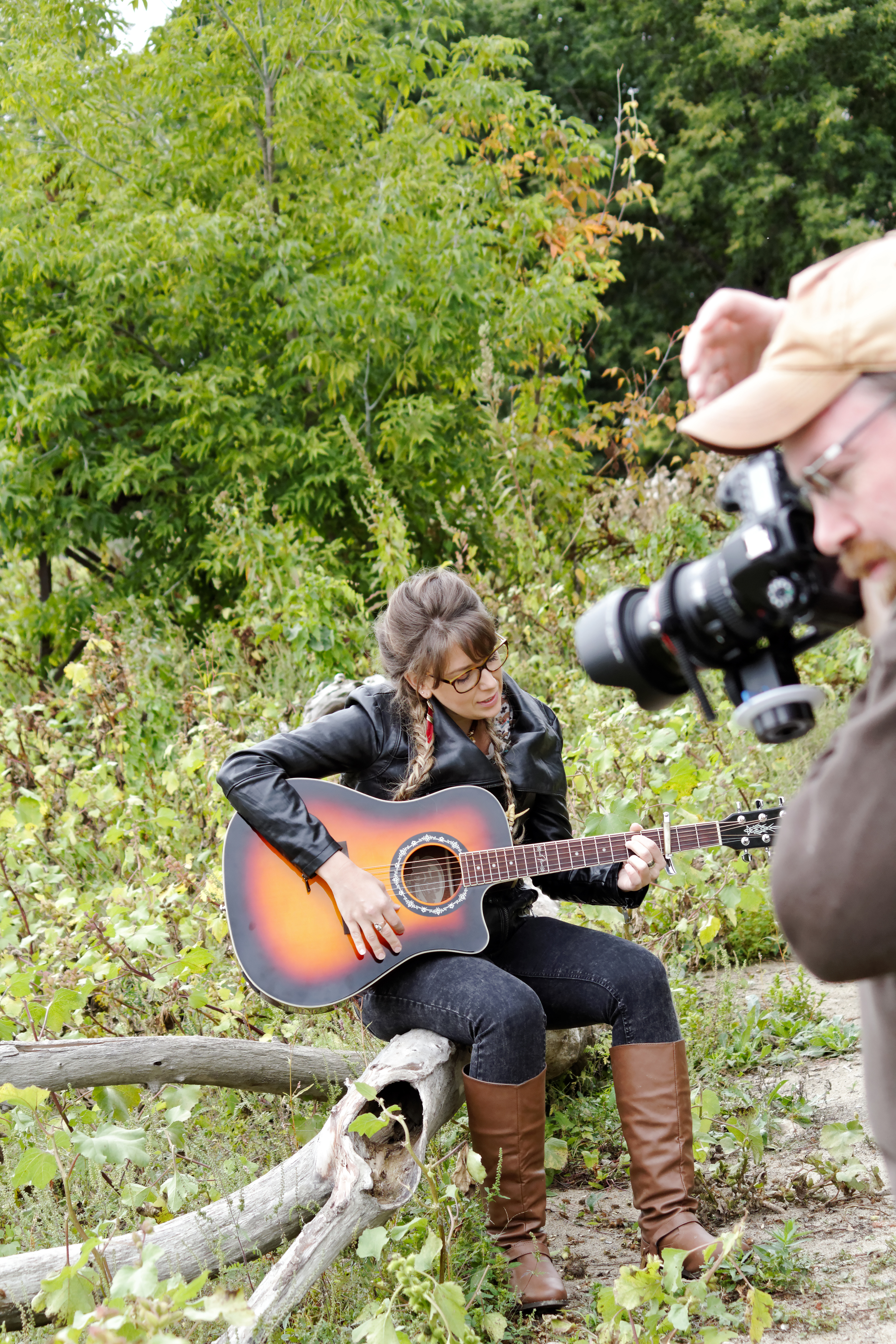A trip to Puvirnituq
Crowd gathering on the ice for the finish of the Ivakkak dog sled race
In my day job, I'm a musician/producer with my business Corvidae Music and in the course of that job, I work with multiple artists and projects. One of them which came from the joining of Chelsey June (with whom we've shot two videos and I produced her EP's "Seize the Day" and "Finding Me") with Inuit artist Jaaji Okpik to create Twin Flames - Aarjuuk. I play guitar with them as part of their backing band and this March we had the opportunity to travel to the community of Puvirnituq in northern Quebec on the coast of Hudson Bay, where the bi-annual Puvirnituq Snow Festival was happening. We had a busy schedule of playing each night for a week, but during the days we had much free time to explore and take in the festival events. I had never been to the north before, and I was thrilled to be able to take in as much of the town, the scenery, and the people as I could in my photography. I also photographed much of the musical performances each night, and it introduced me to some phenomenal talents in the north that we rarely get to see here in Ontario.
As an aviation enthusiast, the trip to anywhere is almost always part of the fun, and with Ottawa being a hub for northern airlines like First Air and Canadian North, I'm familiar with some of the aircraft that are flown in the north. We left for Puvirnituq from Montreal on an Air Inuit 737-200C, which is nearly as old as I am and still a workhorse aircraft in the north due to its ability to operate from gravel airfields which newer 737's don't have. I'm pretty sure I was 5 years old the last time I flew on a -200!
After a stop in La Grande Rivière to unload cargo, we flew on beyond the tree line to Puvirnituq. On approach, the rocky and barren land reminded me somewhat of Newfoundland, but once we landed, the cold was unlike anything I've experienced previously. While it gets very cold in Ottawa in winter, the dryness of the air in the north is quite different. Oddly enough, if you're dressed well enough, I found the coldness in PUV to be easier to live with than the more damp cold in Ontario. However cold it was, the people that met us were friendly and helpful which pretty much extended for the whole duration of the trip.
With Twin Flames playing every evening of the festival, I got to see pretty much all the other performers through the course of the week. From our soundcheck onwards, it was a fantastic week full of amazing music and dance featuring artists like The Jerry Cans, Beatrice Deer, Marie-Celine Einish, George Kakayuk, Saali & The Ravenhearts, Kelly Fraser, Northern Haze, and more. The level of talent was top notch and I felt privileged to be sharing the same stage with them. Camera-wise, I used my Canon EOS 6D for all these shots with either my old manual Tokina adapted PK mount 70-210mm f3.5 or Canon EF50mm f1.8. The challenge as ever with concert photography is the low and constantly changing light, so I was mostly shooting wide open or close to it and at ISO3200 which the 6D handles just fine.
Scenery-wise, the north takes a little getting used to since we were several hundred km's north of the tree line. The landscape that could be seen through the snow was rocky, but interesting. The snow itself makes the scenery, at least in winter, with many distinct shades and textures unto itself. The scale of the landscape is interesting where there are few landmarks, it's hard to tell how far away anything is without a frame of reference. The one thing I was hoping to experience while in PUV was an aurora borealis, which I hadn't seen since I was a teenager in Cape Breton. Through the course of the week it appeared twice that I was able to photograph it, and I was stunned both times with its intensity. Given the amazing location and elements of the festival like the ice and snow sculptures around, I decided to try to shoot the aurora combined with as much landscape as I could, which I managed on Saturday night when I went out around 2AM (much to the worry of my bandmates) to take some photos. On top of that, on Saturday night, there was a fireworks display which I was also able to work into my aurora/landscape shots, bonus! My favourite shot ended up being of one of the ice sculptures which was illuminated by a light embedded in the ice underneath it. I did three exposures, one of the sculpture, one for the landscape behind which was partially illuminated by vehicle headlights, and one for the sky which had the aurora dancing around in it. When I got home, I was able to combine the three exposures into one image successfully, so happy it turned out the way I wanted! On the technical side, most of my daylight landscapes were shot with the 6D and 50mm f1.8, with some shots done with the 300mm f4L IS. I used the circular polarizer and ND filters a lot to handle glare and the large amount of daytime sun. My night shots were done with my old 60D and EF-S 10-22mm, as I was afraid of the extreme cold damaging the 6D. I wish I had used the 6D in retrospect, as the cold did somewhat ice up the camera, but the increase in image quality would have been worth it. The 60D thawed out just fine, and I am still happy with the photos. Check out the gallery below for my landscape photos of PUV:
Last but certainly not least, the people I met in PUV were wonderful. Friendly and hospitable, accommodating and generous, just lovely people all around. Quite often, children would run up and insist to have their photo taken, not because they wanted the photo, but because they wanted me to have a photo of them. Everywhere we went, we met fantastic people and were welcomed. The gallery below is of some of the people we encountered, as well as some of the antics of my bandmates, and just some other random shots of around town. I can't wait for our next trip up north which will be happening this summer, I could see this becoming an obsession for sure! - Jonathan





